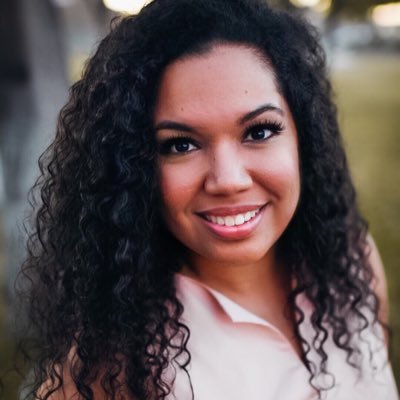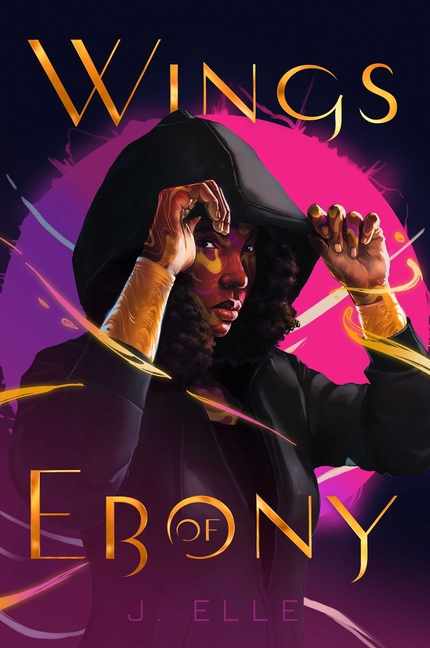From Teaching to Writing

TeachingBooks asks each author or illustrator to reflect on their journey from teaching to writing. Enjoy the following from J. Elle.
Teaching was a profession I fell into. And yet it ended up being one of the most rewarding experiences of my entire life. My students left as much of an impact on me as I left on them. My biggest takeaway from that season of life was: students are paying attention to the world around them. And as a full time author, I’ve realized that truth frames the paradigm with which I approach the stories I create.
A common thread I find in my work is that once I have the reader’s attention, I aim to teach them something, illuminate some thematic parallel behind the fictitious world they’re wrapped up in on the page and real life. Because I firmly believe, while students might appear absorbed in TikTok and their PS5, they’re listening. The world isn’t moving around them without their notice. Students are incredibly perceptive, in some ways, even more than adults. And, yes, sometimes that attention is passive, but kids absorb a lot. Just listen to any Kindergartner ramble about the things they’ve seen or heard. It’ll both tickle and shock you.
Also, the students that I write for, middle grade and young adult, are in an incredible phase of their lives where they’re formulating an understanding of who they are, how they fit in the world, and how they might have an impact on their larger sphere of influence. For some that is their circle of friends, for others it could be the world. Time in the classroom really galvanized this concept for me. I saw my 5th grade students, for example, on their own, connecting a science lesson on fossil fuels with empathy for the environment and personal responsibility to “leave a place better than they found it.” I taught at a KIPP school where lessons span academic and character. And from that experience as well as a parent of three, I believe much of character and compassionate citizenship is congealed in classrooms around whiteboards and textbooks. For better or for worse.
The inspired child is the child who reaches for dreams, tries despite failure.
Further, literature, as a cornerstone of education, has a formative impact on what students believe about themselves and the world around them. Fiction in particular is uniquely powerful in that it shows students what could be because it centers the imagination. And imagination is a gift that truly keeps on giving. The inspired child is the child who reaches for dreams, tries despite failure. It is often the inspired child who knocks firmly on the glass ceiling because the wafting aroma of what could be is too appetizing to resist. Fiction is a gateway. Even at the middle and high school age, wide access to fictional literature–which broadly reflects various experiences–breeds compassion and social responsibility by way of engaging the imagination. This is another reason why I chose to write in the fantasy genre.
I don’t write “issue books” per se, but I write books that address issues. Wings of Ebony, a YA duology out now, deals with racism, allyship, privilege, colonization, found family, friendship, and forgiveness, just to name a few. Park Row Magic Academy, a middle grade series out in 2022, deals with gentrification, confidence, friendship, and intergenerational families. These are not light topics. But, in fantasy the story is one step removed from reality, which is enough of a veneer, I believe, to allow students to engage with issues without feeling like they’re immersed in them head on. Discussing hate crimes done in your neighborhood, to your community, is emotionally taxing; whereas discussing a story about a fictitious culture in a fictitious location dealing with oppression tied to their identity, might feel less so. This varies per person, of course. But I love that fantasy gives readers a layer of distance. Even for their own mental health. As a teacher I found I could pull my students into some of the most robust real-world discussions, if I had a way to package it that was accessible and a bit nuanced. This has definitely shaped how I approach storytelling.
Before someone can impact change, or even brainstorm how to impact change, they have to first believe they can.
If I could belabor this point for another second, I’d love to point out that there’s a powerful juxtaposition where real, tough situations are met with a hero or heroine’s magic. And this is what readers find in my books. It’s my hope that this contrast pierces the psyche of my student readers. Because at least 50% of teaching was getting my students to believe in what they were capable of. Before someone can impact change, or even brainstorm how to impact change, they have to first believe they can. Books have the power to do that. Fantasy books in particular do this in a uniquely, cool way and it’s my hope that more of them find their way into classrooms.
Thus, I proactively weave real world “issues” into my fantasy stories. Why? To reflect issues readers face in an affirming way, to show readers they’re capable of impacting change and powerful despite how they might feel. In Wings of Ebony in particular, I realized about halfway through writing it that if Rue, the main character, could make a kid believe they’re unstoppable, she could change the world. That is the power of imagination and representation. And that realization bolstered the narrative through the rest of the book.
So, I guess, in many ways, teaching led me to work as an author. It wasn’t a direct path, more of meandering one #because life. But, the two are inextricably linked and continue to influence both my approach to storytelling and my career. Interfacing with students is very important to me, as an example. And is something I dedicate a large amount of time to, which has been hard in this pandemic world. However, virtual school visits have been a true treat. I don’t just want to write the books, I want to talk to students, tell them how I did it, and hopefully inspire them to write their own stories on and off the page.
Books and Resources

TeachingBooks personalizes connections to books and authors. Enjoy the following on J. Elle and the book she’s created.
Listen to J. Elle talking with TeachingBooks about the backstory for writing Wings of Ebony. You can click the player below or experience the recording on TeachingBooks, where you can read along as you listen, and also translate the text to another language.
- Listen to J. Elle talk about her name
- See a Reading Group Guide for Wings of Ebony
- Discover J. Elle’s page and books on TeachingBooks
- J. Elle on her website, Facebook, Instagram, and Twitter.
Learn more about J. Elle’s process for writing in this series of 4 videos from her Wings of Ebony Curriculum, a 6 week virtual learning project aligned to Standards.
- Action Scenes Video Lesson
- Story Structure Video Lesson
- Plot Driving Character Video Lesson
- Quick Outlining Video Lesson
Visit the TeachingBooks Wings of Ebony Activity/Lesson Plan page for the complete Curriculum.
Explore all of the For Teachers, By Teachers blog posts.
Special thanks to J. Elle and Simon & Schuster for their support of this post. All text and images are courtesy of J. Elle and Simon & Schuster, and may not be used without expressed written consent.



Great article